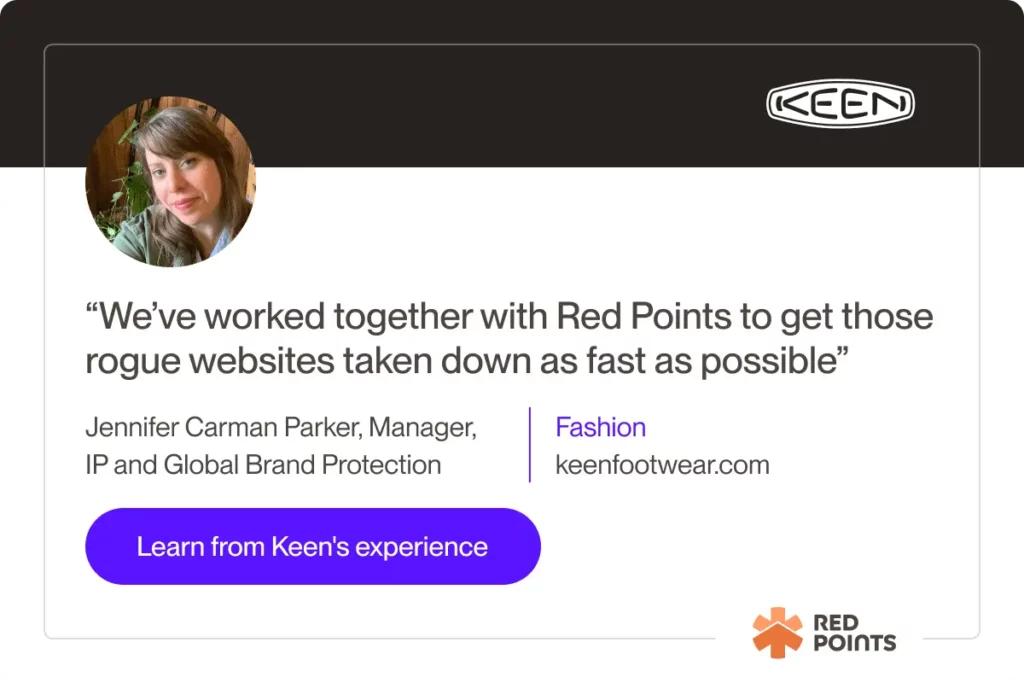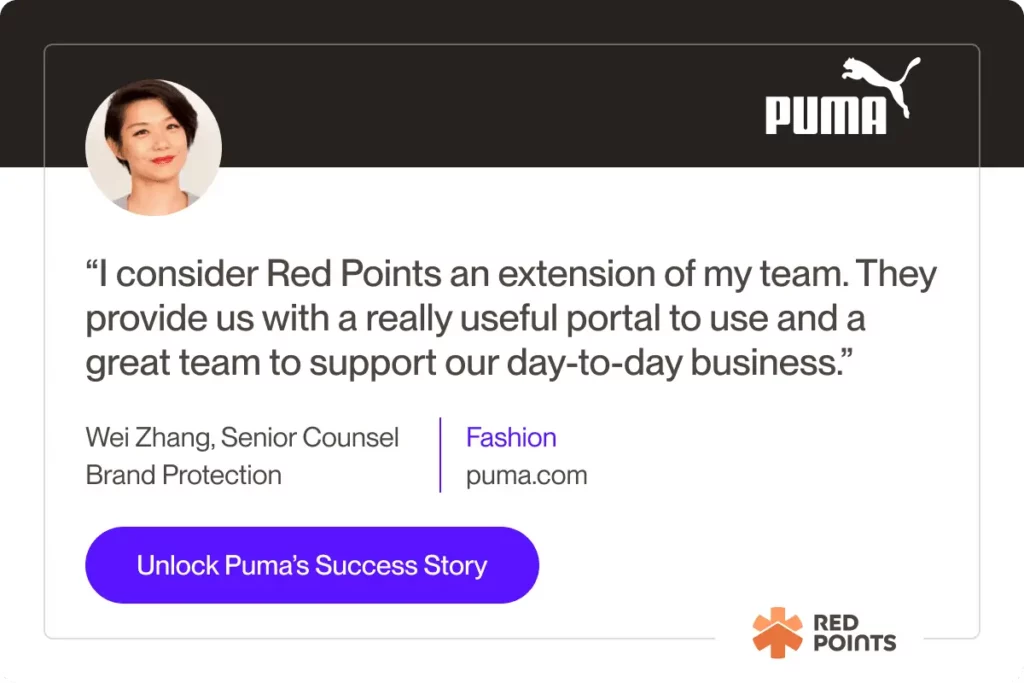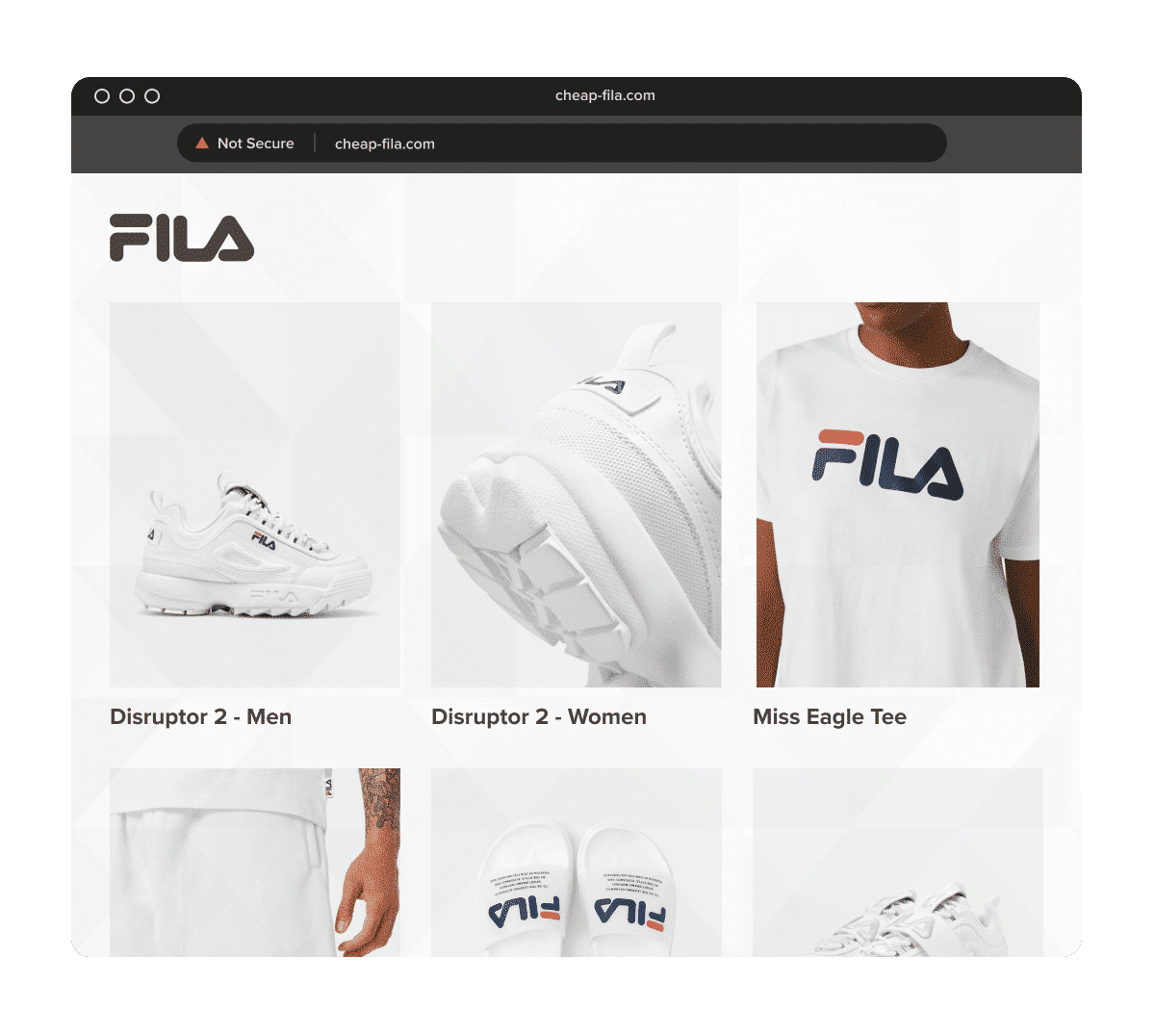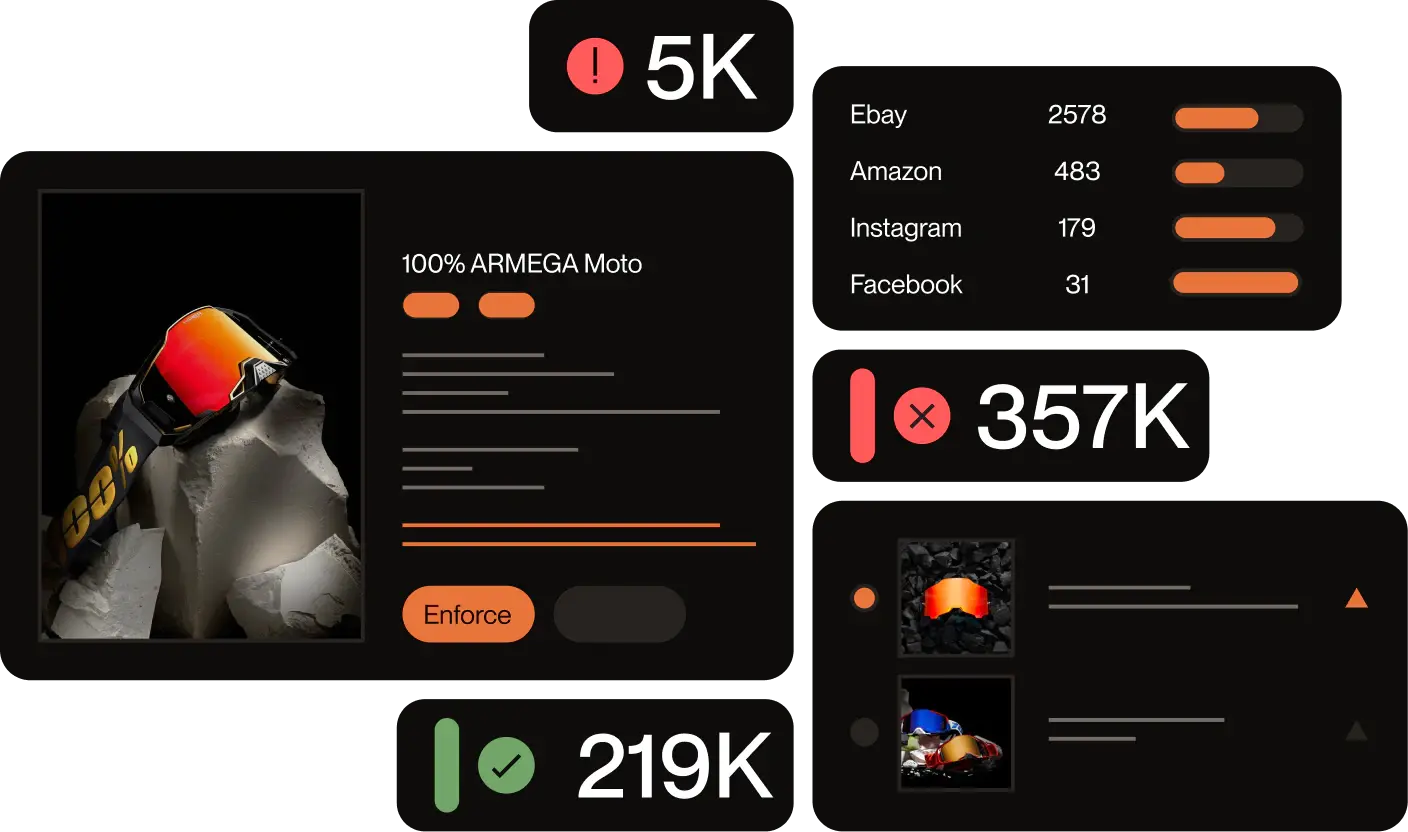Struggling to keep up with replica clothing websites?
These sites flood search engines, steal your traffic, and confuse your customers with poor-quality imitations. They overwhelm your team with constant violations, exploit cross-border legal loopholes to avoid takedowns and use advanced tactics like domain squatting and AI-driven cloning to stay one step ahead.
The result? Lost revenue, damaged trust, and a brand reputation at risk.
This guide is here to help. You’ll learn practical steps to report and take down replica websites, overcome enforcement challenges, and reclaim control of your brand in the fight against counterfeiters.
Proven steps to report and enforce against replica clothing websites
1. Report to the hosting provider for swift action
Hosting providers are often the first line of defense against replica sites. Targeting the server hosting the counterfeit website can result in the site being taken offline, disrupting counterfeiters’ operations. Quickly disabling access to the site minimizes its impact on your brand.
- Identify the hosting provider: Use tools like WHOIS or hosting lookup services (e.g., MXToolbox) to find the hosting provider.
- Gather evidence: Collect clear screenshots of the replica site, URLs, and documentation proving the infringement, such as trademark registrations, copyrights, or product images.
- File a report: Submit a complaint via the hosting provider’s abuse reporting form or, if applicable, their DMCA takedown process. Be thorough and provide all supporting evidence.
2. Notify the domain registrar for domain-level action
Domain registrars oversee the registration of website addresses. Reporting a domain for hosting fraudulent activity can result in the domain being suspended or removed, hindering counterfeiters’ operations.
- Use WHOIS data: Use a WHOIS lookup tool (e.g., ICANN Lookup) to identify the domain registrar and retrieve contact details.
- Submit a complaint: File a report with the registrar, including detailed evidence of the infringement, proof of ownership of trademarks or copyrights, and relevant documentation.
- Follow up: Monitor the registrar’s response. If no action is taken, escalate the complaint through legal or regulatory bodies.
Note: Counterfeiters often migrate to new domains after takedowns. Implement ongoing monitoring to detect and act on emerging threats proactively. Tools like Red Points’ Domain Takedown Solution automate domain tracking, consolidating evidence, and generating complaints for faster resolution.

3. Request removal from search engines to limit visibility
Counterfeit websites rely on search engine visibility to attract traffic. Filing takedown requests with major search engines like Google and Bing can significantly reduce their reach.
- File a Report: Use Google’s Copyright Removal Tool or Bing’s equivalent to submit a trademark or copyright infringement notice.
- Provide Evidence: Include URLs of the counterfeit site, proof of ownership for your brand’s trademarks, and documentation of the infringement.
- Monitor for Compliance: Check search engine results regularly to ensure compliance. Re-submit requests if the counterfeit site reappears.
Note: Platforms like Red Points automate search engine takedowns, achieving success rates of over 92% in enforcement actions. AI tools streamline identification and takedown processes, saving time and resources.
4. Report fake social media accounts promoting replica goods
Social media platforms are frequently used to promote counterfeit products. Reporting these accounts can disrupt their visibility and sales channels.
- Locate the “Report” option: On platforms like Instagram, Facebook, or TikTok, find the fake account or post. Click on the three dots in the corner and select “Report.”
- Provide evidence: Follow the platform’s steps to submit a report, including screenshots of the counterfeit activity or links to infringing sales pages.
- Monitor for repeat offenses: Stay vigilant for new accounts or posts promoting replica goods. Counterfeiters often create new profiles after enforcement actions.
Note: Social media is a playground for counterfeiters, but manual monitoring and reporting fake accounts can drain your resources. Red Points’ AI-driven solution actively scans social platforms for counterfeit activity, validates infringements, and enforces removals. Our clients, including global brands like FILA, have used our platform to take down hundreds of thousands of fake accounts, safeguarding their reputation and restoring consumer trust.
Working with authorities and industry partners
File a report with local and international authorities
Law enforcement agencies play a critical role in dismantling counterfeit networks, especially those that operate across borders. Filing a report allows brands to leverage investigative resources and take action against counterfeiters more effectively.
- Collect evidence:
- Gather comprehensive proof of infringement, such as product links, counterfeit sales communications, financial transactions, and screenshots.
- Include detailed descriptions of the counterfeit products, the associated damages, and how they harm your brand and customers.
- File reports:
- Submit complaints to relevant authorities:
- INTERPOL: Ideal for cases with an international scope involving organized counterfeit networks.
- Customs Agencies: Essential for cases involving cross-border shipping of counterfeit goods.
- Local Law Enforcement: Address domestic counterfeiters operating within your jurisdiction.
- Ensure the evidence is clear, organized, and tailored to the reporting body’s specific requirements for swift action.
- Submit complaints to relevant authorities:
Collaborate with anti-counterfeiting organizations
Partnering with organizations that specialize in combating counterfeiting can amplify enforcement efforts and provide access to additional resources.
- Examples of Anti-Counterfeiting Groups:
- International Trademark Association (INTA): Offers resources, training, and global advocacy on intellectual property enforcement.
- Business Action to Stop Counterfeiting and Piracy (BASCAP): Focuses on facilitating collaborations and intelligence sharing to combat piracy and counterfeiting.
- World Customs Organization (WCO): Works to enhance cooperation between customs authorities to prevent the import/export of counterfeit goods.
- The Benefits:
- Collaborative efforts can improve the speed and efficiency of enforcement actions.
- Industry organizations often share intelligence on counterfeiting trends, helping brands stay ahead of counterfeiters’ tactics.
The Red Points advantage
Tackling replica sites requires a mix of technology, expertise, and coordination. Red Points simplifies this process with proven automated solutions that:
- Identify counterfeit sites and associated actors.
- Streamline reporting to authorities, registrars, and platforms.
- Provide real-time insights and analytics to enhance enforcement strategies.
By working with Red Points and leveraging industry partnerships, brands can efficiently protect their intellectual property, customers, and revenue.

What’s next
Tackling replica clothing sites isn’t just about removing fake listings, it’s about staying one step ahead. Counterfeiters are evolving, and so should your strategy.
This article equips you with practical steps to report and remove replica sites, but the real key is combining these efforts with proactive tools and partnerships. Red Points delivers automated, scalable solutions that help brands not only reclaim lost revenue but also fortify their digital presence against future threats.
Your brand’s trust, reputation, and revenue are worth fighting for. Start protecting them today—request a demo with Red Points and see how easy safeguarding your brand can be.







